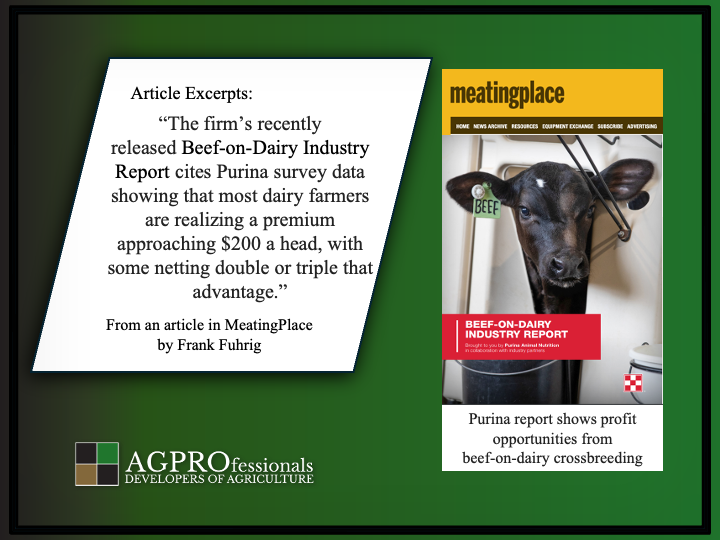The contraction in the U.S. beef herd has opened opportunities for dairy producers to capitalize by delivering beef-on-dairy crossbred calves, according to a report from Purina Animal Health.
The firm’s recently released Beef-on-Dairy Industry Report cites Purina survey data showing that most dairy farmers are realizing a premium approaching $200 a head, with some netting double or triple that advantage.
The current market has about 3 million beef-on-dairy cattle according to the report, which includes chapters written by Purina staff as well as beef industry experts from academia and extension programs.
Kansas State University Professor Robert Weaber, department head for the Eastern Kansas Research and Extension Center, writes that adding beef genetics to breeding programs can help dairy producers “enhance their operations and maximize the value of their surplus calf stream.” Raising cattle with a different genetic profile requires focus attention on “other factors like nutrition and management” to achieve the “full genetic potential and value,” he said in the report’s section on selecting sires.
For example, Olivia Genther-Schroeder, senior technical innovation manager for Purina Animal Nutrition emphasizes nutrition management in the first two to three months after beef-on-dairy calves are born. “By feeding them right starting at birth, we’re helping them pack on muscle and develop the desired marbling producers strive for and consumers seek when they are making their beef purchasing decisions,” she writes.
The “growing trend” toward beef-on-dairy cattle is “a response to factors reshaping the beef industry, such as changing consumer demands, low beef cattle numbers, economic considerations and environmental impacts,” Purina Animal Nutrition vice president Dr. Troy Wistuba writes. He catalogs benefits including the consistent beef supply that dairy farms can deliver through continuous breeding, traceability for every animal, lower carbon footprint from beef genetics and higher quality characteristics include raised red meat yield and quality grades from dairy genetics and better marbling from beef lines.
Link to the Purina study HERE or download by clicking the link below

